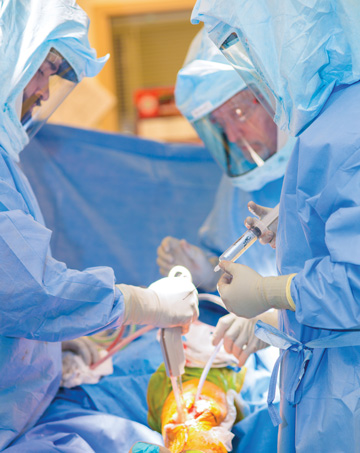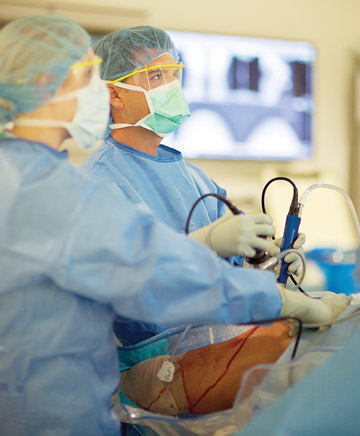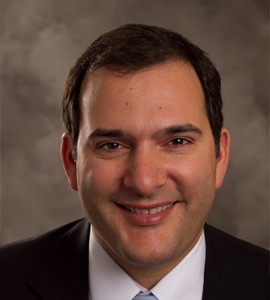Before launch, consider these crucial aspects for success.

LEG WORK Numerous factors must be addressed before the first patient arrives to ensure financial success and superior outcomes. | Ohio State News
As freestanding surgery centers welcome an ever-growing number of hopeful total joints patients, core components of successful programs have enabled various surgery centers to capitalize on the surge. Here’s a short list of evidence-based, experience-supported areas which two experts suggest interested ASCs focus on before launching total joints lines.
Patient selection. Anthony Mascioli, MD, an orthopedic surgeon at the Campbell Clinic in Memphis, Tenn., says strict adherence to a patient selection algorithm is key for establishing a program. His published algorithm outlines appropriate patients based on numerous factors, including meeting American Society of Anesthesiologists (ASA) guidelines for surgical patients, with ASA IV excluded; a full medical history and preoperative testing for electrocardiography; normal, healthy ranges for comprehensive metabolic panels and complete blood counts; and exclusion of patients with comorbidities such as obstructive sleep apnea, BMI greater than 35 kg/m2 and hypertension.
Standardized clinical pathways. Dr. Mascioli recommends multimodal anesthesia strategies, including preoperative peripheral blocks, intraoperative spinal blocks, perioperative intravenous antibiotics, and preoperative and intraoperative applications of chlorhexidine. Blood management should be addressed through intraoperative intravenous tranexamic acid unless contraindicated, followed by topical tranexamic acid. Pain management may also include pericapsular injection of liposomal bupivacaine, nonsteroidal anti-inflammatory drugs, gabapentin, tramadol, acetaminophen and, as needed, oxycodone.
Michael Ast, MD, orthopedic surgeon and chief medical innovation officer at the Hospital for Special Surgery in New York City, urges centers to focus on three things: blood management by including tranexamic acid and excluding patients with anemia; fluid management during regional anesthesia, with the patient hydrated two hours prior to and during surgery and rehydration after postoperatively to avoid dizziness and facilitate ambulation; and opioid-sparing multimodal pain management.
Adequate staffing. Both surgeons believe staffing shortages are likely the greatest challenge surgery centers face in launching total joints programs. "It would not be prudent to start total joint surgeries with limited staff," says Dr. Ast, who suggests flexible staffing models as a possible solution. For example, centers that are part of large ASC groups can share staff among their facilities, while smaller centers can bring in per diem staff from local hospitals. "With any staffing approach, training is key to get staff up to speed quickly," adds Dr. Ast.
Patient preparation.Dr. Mascioli’s approved patients complete a preoperative total joint class with physical therapy to understand their own roles in recovery. "Identifying those patients on the front end that can do it, telling them what will transpire, and helping them understand we are all on the same team sets an expectation with the patient up front," Dr. Mascioli notes. "From there it is up to me and my team to deliver that expectation through our predetermined approach and watch it bear fruit."
Capital purchases. Leaders at new or retrofitted centers must be agile by considering various creative avenues to meet their capital equipment needs for total joints, says Dr. Ast. Options include partnering with a surgery center management company or other source of outside capital. Dr. Ast suggests investing in a larger sterilizer along with a patient engagement platform that can deliver a personalized level of care throughout the patient journey. "You have to understand the logistics of purchasing and managing instruments such as mallets and drills, as well as handling implants, because these things aren’t normally kept on-site at an ASC," adds Dr. Ast.
.svg?sfvrsn=be606e78_3)



.svg?sfvrsn=56b2f850_5)